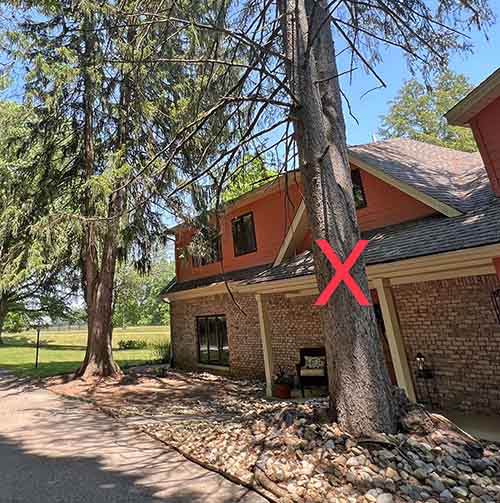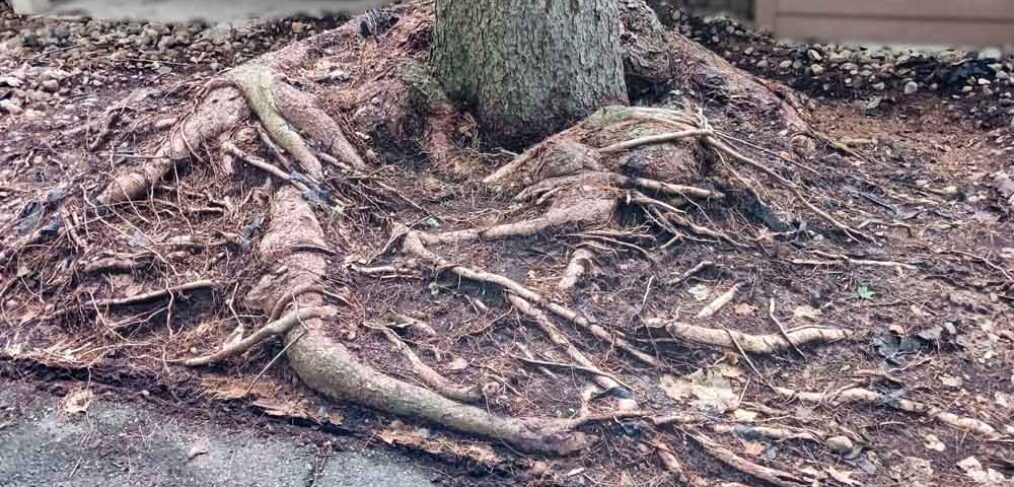
Girdled Tree Roots Lead To Spruce Tree Removal
Impenetrable surfaces surround the base of this Norway spruce, resulting in badly girdled tree roots.
Girdled roots are lateral tree roots that grow in a circular or spiral pattern around the trunk of a tree, either at or below the soil line. As the trunk and the root increase in diameter, they can restrict the flow of water and nutrients to the leaves, eventually choking off the water-carrying wood in the trunk² ³.
Girdling tree roots are more common than many people realize and can be deadly to trees¹.
They can be caused by a variety of factors, including improper planting or transplanting, heavily compacted soil, and close proximity to foundations, curbs, and other obstructions¹. In this case the girdling caused severe decline, and the tree had to be removed.
A Tale of Two Spruces
← Click the image to see the whole picture.
Concrete surrounded the base of the Norway spruce tree on the right. The roots were confined to growing in a limited area, and they began circling above and below the soil. The health of the tree suffered greatly. It declined and needed to be removed. A delicate job given its proximity to the home.
The roots of the spruce tree on the left have access to grow out into the rest of the landscape.
Exposing The Girdled Roots
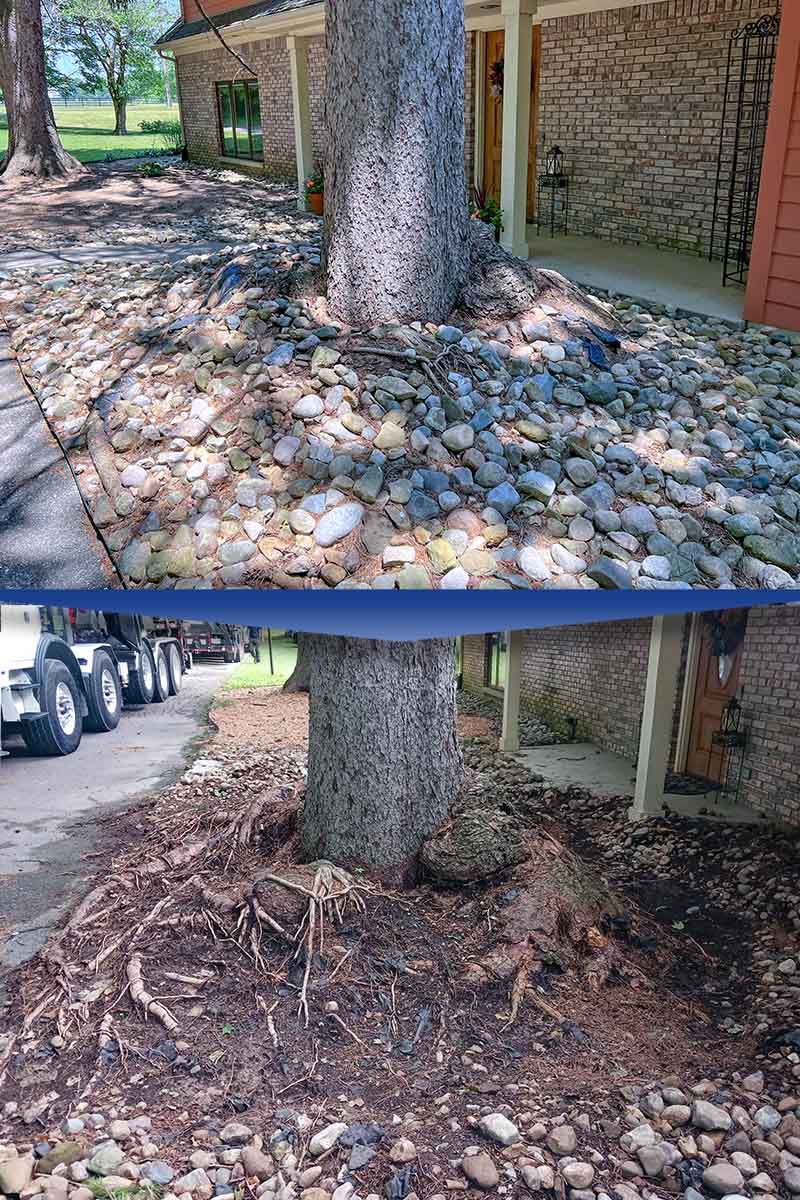
before and after exposing the girdled roots (view 1)
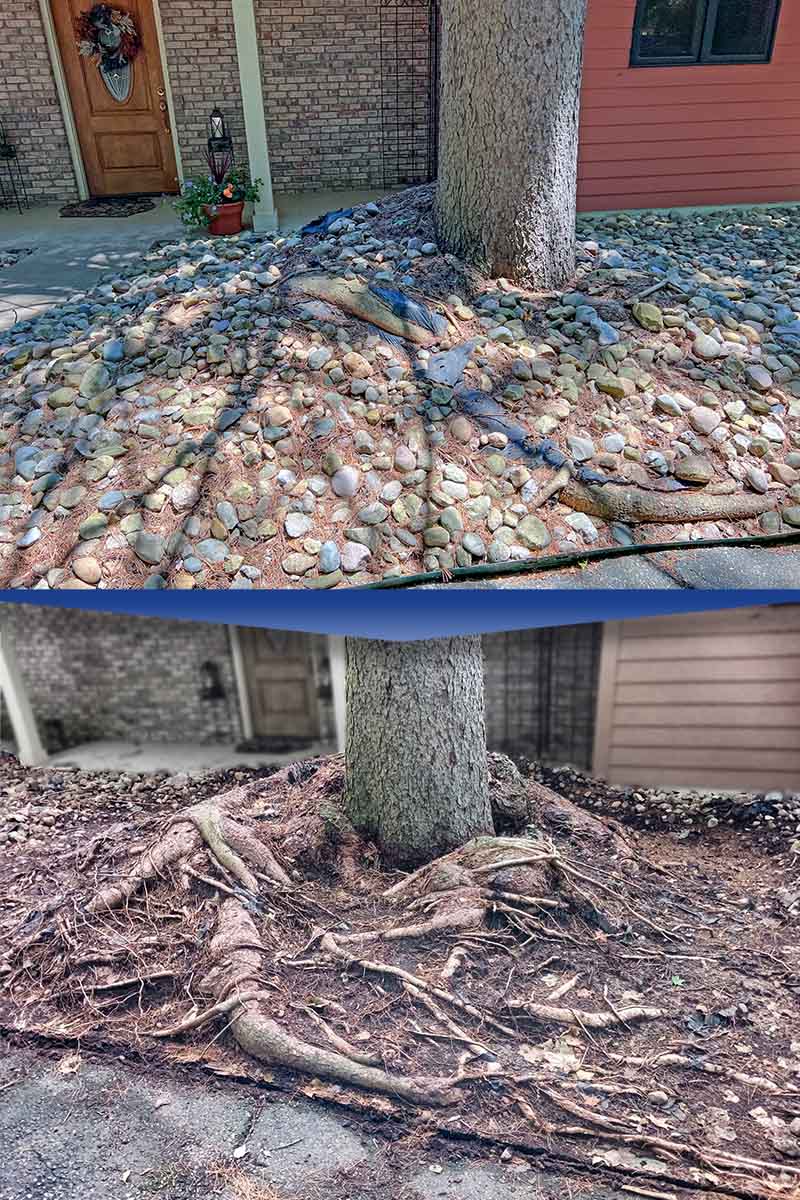
before and after exposing the girdled roots (view 2)
After Tree Removal & Stump Grinding
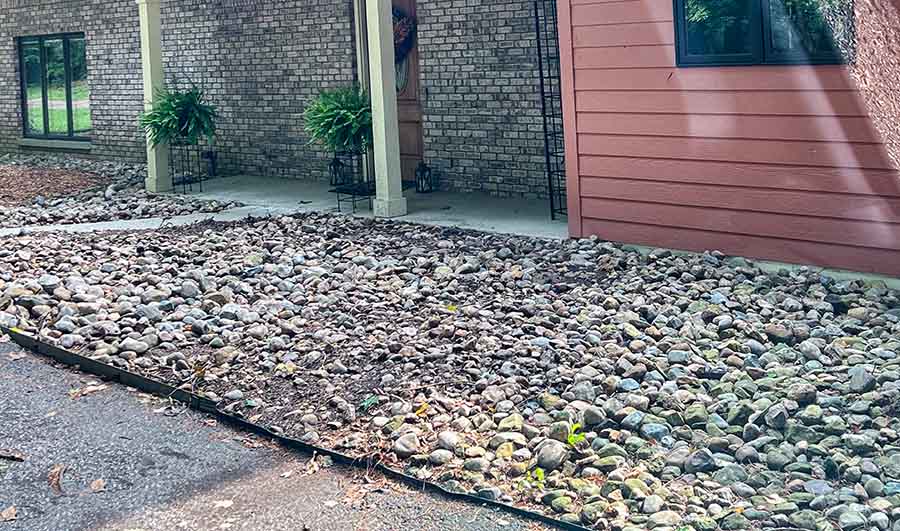
The tree removal site after extensive stump grinding.
Treatment For Girdled Tree Roots
In some cases, an arborist can rescue a tree from girdled tree roots by removing the troublesome root(s). This process involves exposing roots around the flare with a special tool using compressed air to excavate the soil without damaging the tree. With the roots exposed, an ISA Certified Arborist can determine which root sections should be removed.
Grafting or bridge grafting can also be performed so that nutrients can be transported across the tree. The graft is considered successful when enough nutrients can be carried over the wound, which would permit the roots of the tree to survive and allow the tree to absorb water and minerals to help the tissues and leaves.
Preventing Girdled Tree Roots
The best way to prevent girdling is to dig the correct size planting hole, loosen and straighten circling roots when planting, and plant at the proper depth with light mulching¹ ². It is also important not to pile mulch up onto the trunk flare, as roots can begin to girdle around it underneath. According to a Purdue Landscape Report, girdled roots can also lead to structural instability and increased susceptibility to pests and diseases⁴.

